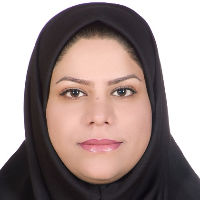The spatial analysis of the local community to have the effective social indexes on resiliency against the environmental hazards (case study: villages of Sistan region)
The occurred disasters in recent decades show that communities and people have getting incrementally vulnerable against the hazards. Therefore, social resiliency is the capacity of change, adaptation, and power of resisting against the social stresses and disasters. This research aims at the spatial analysis of the local community to have effective social indexes on resiliency against the environmental hazards in the Sistan region. The methodology of the research is applied due to its nature and descriptive-analytical with the quantitative-surveying approach based on structural equations modeling (SEM) due to its method. The statistical population of the research includes heads of households in 373 villages that 189 people were selected as a statistical sample in proportion to the population volume by Cochran formula using the stratified random sampling method. Inventory was used as a tool to collect data of research, and validity and reliability of tools were studied and confirmed by confirmatory factor analysis, and Cronbach’s alpha test and composite reliability, respectively. SEM method with partial least squares technical approach and SMART PLS3 software was used to analyze the research data in inferential statistics level. Findings of research showed that the path coefficients of social indexes relationship with social resiliency are significant based on t-value and p-value. In a way that t-value of this path is 11.28 and higher than its critical value, 2.58, and the p-value is lower than 0.05. In addition, WASPAS model was used for the spatial analysis of the effective social factors on the resiliency of the studied villages. This showed that villages of Zahak city have the maximum Qi and villages of Hamoon city have the minimum Qi. Thus, it is concluded that there is a significant relationship between the social indexes and the resiliency of the villagers. Moreover, the volume of the social index effect is high. Since villagers have higher Qi, they have more social resiliency. Hence, it is claimed that the villages of Zahak region have higher social resiliency.
-
Analysis Private Sector Participation in Urban Infrastructure of Isfahan
Hoseinali Bagi *, Sirus Ghanbari
Road journal, -
The facilitating role of community-oriented processes in the economic empowerment of peri-urban neighborhoods of Zabol
Azam Bordbargalavi, *
Journal of Geographical Research on Desert Areas, -
Spatial analysis of the extent to which the local community has economic indicators affecting resilience against environmental hazards(Case study: villages of Sistan region)
, Javad Bazrafshan, *,
Rural Development Strategies, -
The Impact of Internal Marketing on Employee Organizational Commitment in Fledgling Knowledge-Based Companies with the Mediating Role of Organizational Rewards
Malihe Shah Beigi, *
Journal of Innovation EconomicEcosystem Studies, -
Spatial analysis of the extent to which the local community has effective physical-environmental indicators resilience to environmental hazards (Case study: villages of Sistan region)
, Javad Bazrafshan, , *
Journal of Village and Space Sustainable Development, -
Predict the effectiveness of academic information system Based on the components of strategic intelligence
Alemeh Keikha *, Bibi Eshrat Zamani
International Journal of Education and Cognitive Sciences, Spring 2021



